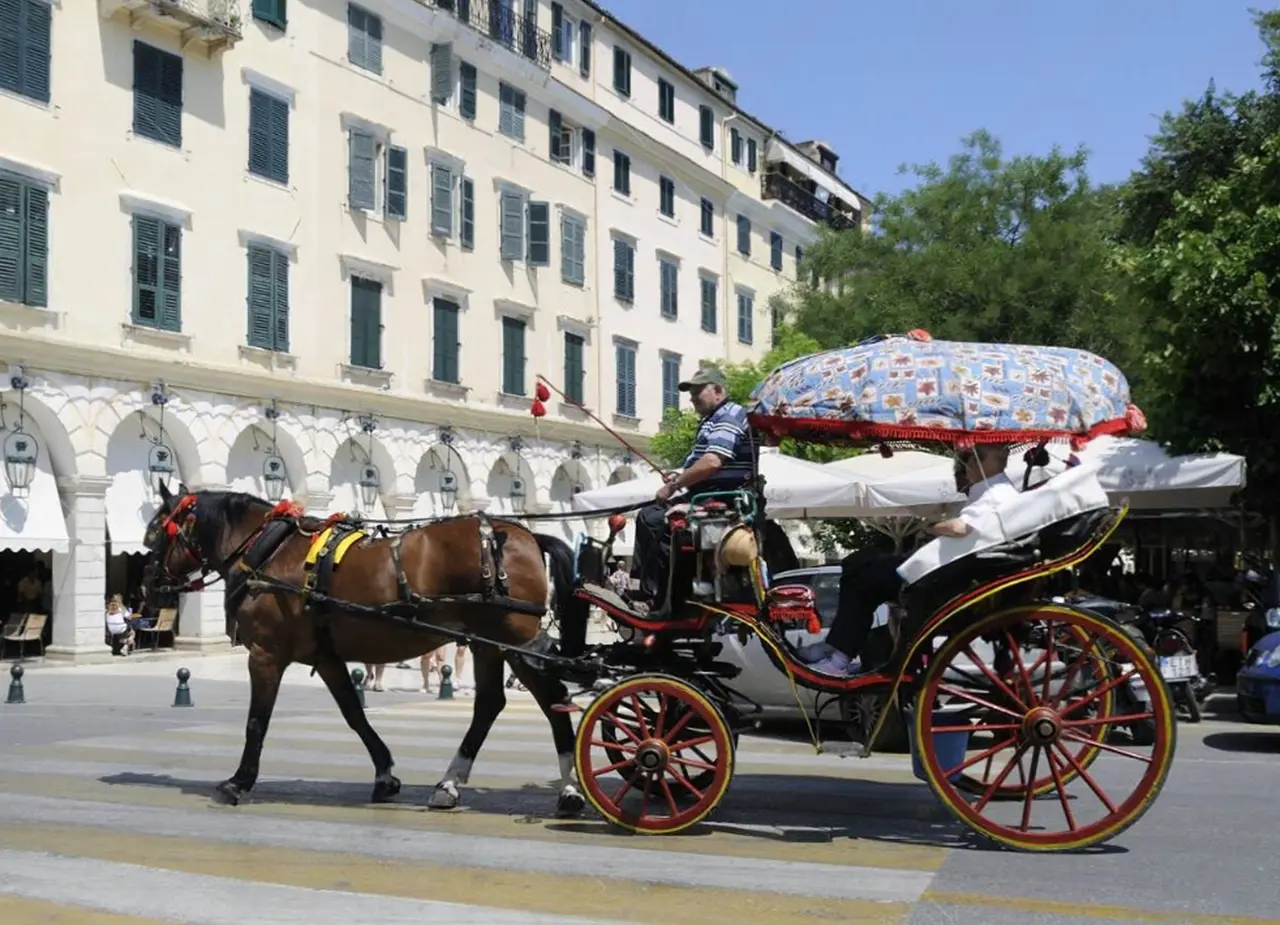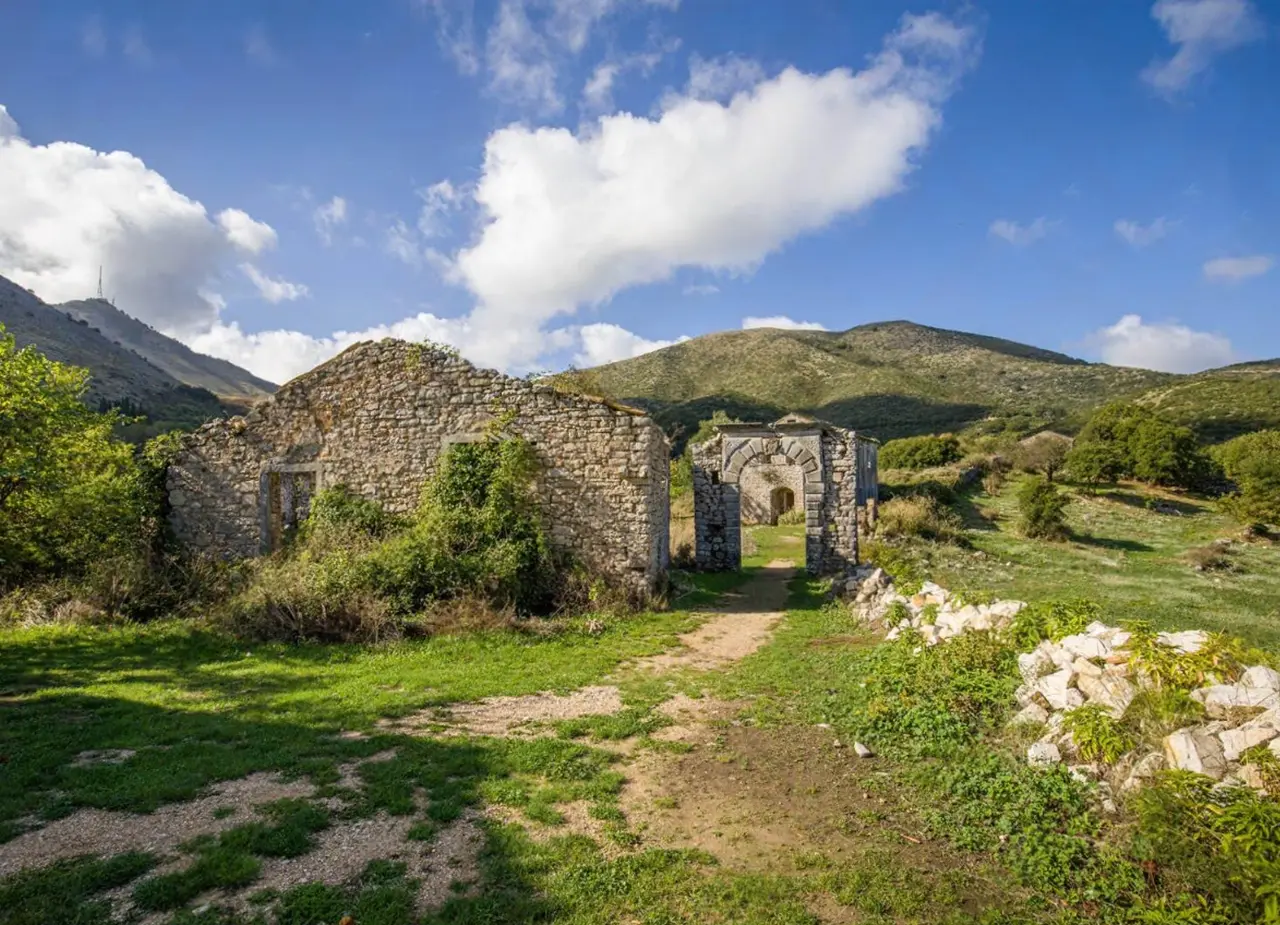Ancient Corfu and Mythology

Corfu, one of the most beautiful islands of the Ionian, is not only known for its natural beauty and Venetian architecture but also for its deeply rooted history and mythology. Since ancient times, this island has been an important center of trade, culture, and strategic significance, while it has also been the setting for many mythical tales that have influenced Greek tradition.
The island has been inhabited since prehistoric times, with traces of civilization dating back to the Neolithic period. In fact, traces of tools and vessels have been found in areas such as Chalikounas, Messonghi, and Sidari. Corfu’s strategic location, between Greece and Italy, made it one of the most important maritime and trade centers of the Ionian. Known in ancient times as Scheria, Makris, Hyperia, or Corcyra, it was initially a colony of Eretria but became a colony of Corinth around the 8th century BC. However, its relations with the metropolis were not always peaceful, and in 435 BC, Corfu became involved in a conflict with Corinth, which was one of the factors leading to the Peloponnesian War. The power of the island was such that it minted its own coinage, while it also maintained the second-largest fleet in Greece, after Athens, with 120 triremes. During the Classical and Hellenistic periods, Corfu developed into a significant naval center. The city of Corfu had strong walls, markets, temples, and theaters, and its cultural influence was notable throughout the Ionian region.
The importance and influence of the island naturally extended to its mythology. The island is associated with some of the most important myths of ancient Greece, including those involving Poseidon, Odysseus, and the Phaeacians, as well as other lesser-known tales.
According to Greek mythology, Corfu took its name from the nymph Corcyra (or Korkyra), the daughter of the river Asopus. Poseidon, the god of the sea, fell in love with her and abducted her, taking her to the island, which was named after her. From their union, Phaeax was born, who became the ancestor of the Phaeacians, the mythical people who lived on the island. One of the most famous myths associated with Corfu is that of Odysseus. In Homer’s Odyssey, after a terrible storm, Odysseus is shipwrecked on the shores of the Phaeacian island. There, Nausicaa, the daughter of King Alcinous, finds him and leads him to her father’s palace. The Phaeacians, known for their hospitality and love of sailing, help him return to Ithaca by providing him with a ship and valuable gifts.
Paleopolis
Some of these stories seem to have taken place in the area of Paleopolis, which is located near the Garitsa Bay and the Chalkiopoulos Bay, allowing it to become an important commercial and maritime center of the region. Paleopolis hosts many archaeological monuments that demonstrate the significance of the ancient city. In the area of Stratia, one can find the Temple of Artemis, one of the most important monuments dating back to the 6th century BC, and considered one of the first Doric temples in Greece. It stands out for its pediment decoration, depicting the Gorgon Medusa, which is now displayed at the Archaeological Museum of Corfu. In the area of Mon Repos, there is another well-known temple—the Temple of Kardaki, which is believed to have been dedicated to Poseidon or Hera. It is located in a picturesque spot near the sea and shows architectural characteristics that reveal influences from various Greek cities. Near the area and across from the Early Christian Church of Agia Kerkyra, there are the ruins of the ancient Agora, which was the center of the city’s commercial and political life, where the inhabitants gathered for transactions and public discussions.
Today, Paleopolis is one of the most interesting archaeological sites in Corfu. Situated in a lush green area, visitors can walk through the ruins of the ancient city, admire the monuments, and enjoy the natural beauty of the landscape. This unique area is a remarkable destination for those interested in history and archaeology, offering an exciting glimpse into Corfu’s past and its timeless significance in Greek history.
Ancient Corfu is not only a place of history but also a place where mythology comes to life through its archaeological monuments and traditions. The island continues to captivate visitors from all over the world, who come to explore the traces of the past and discover the fascinating stories that have shaped its culture. Whether through its archaeological monuments or the myths of Homer, Corfu remains a living symbol of the Greek spirit and its timeless legacy.

